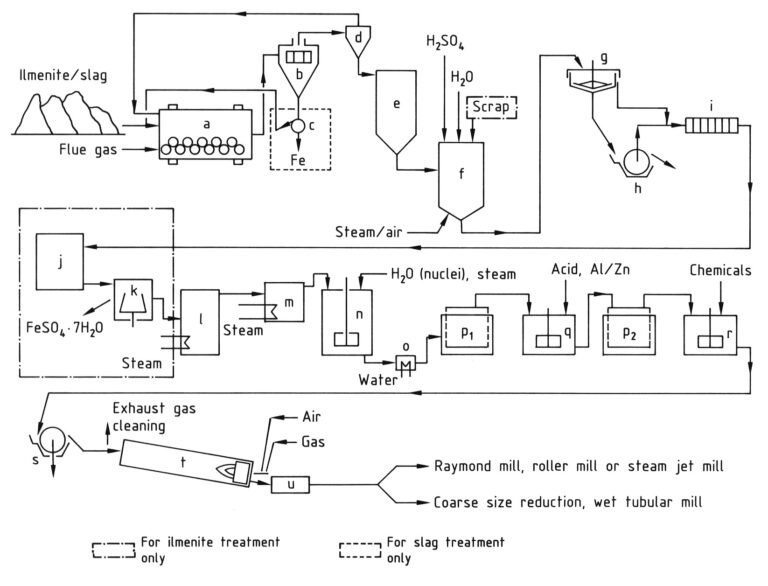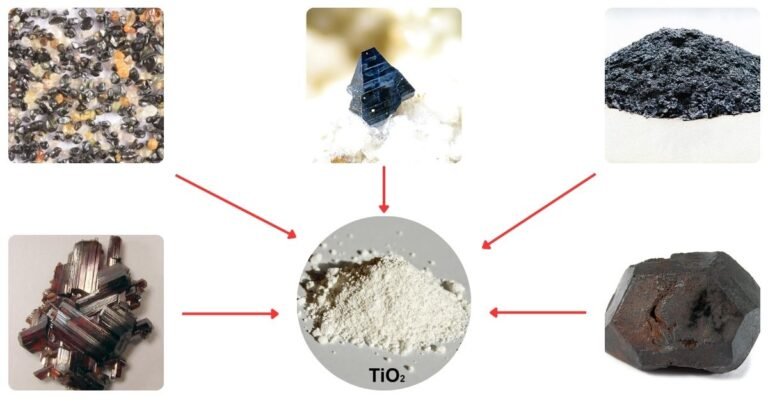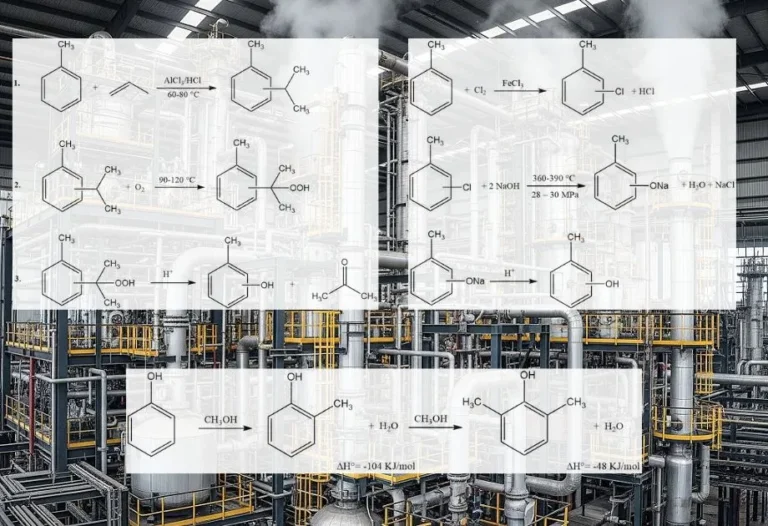
Catalysts are substances that accelerate or facilitate chemical reactions without themselves being consumed or changed.
These versatile substances are used in various fields, including industrial chemistry, to drive chemical reactions that are necessary for the production of essential materials and products.
Table of Contents
1. Understanding Catalysts in Industrial Chemistry
Industrial chemistry involves large-scale chemical reactions that produce a wide range of materials and products, such as fuels, polymers, and pharmaceuticals.
These reactions often require specific conditions such as high temperature and pressure, which can be energy-intensive and costly.
Catalysts provide a more sustainable and efficient alternative by lowering the activation energy required for chemical reactions to occur.
As a result, the reaction can proceed at a faster rate and at lower temperatures and pressures, reducing energy consumption and cost.
2. The Role of Catalysts in Sustainable Development
The role of catalysts in sustainable development is becoming increasingly important as society seeks to reduce the environmental impact of industrial processes.
Catalysts can promote more efficient, cleaner, and safer chemical reactions, contributing to the achievement of sustainable development goals.
2.1. Energy Efficiency
Catalysts can increase the efficiency of energy conversion processes, such as the production of hydrogen fuel from water. This process, called electrolysis, involves the use of an electric current to split water molecules into hydrogen and oxygen.
Catalysts, such as platinum or iridium, can reduce the amount of energy required to split water, making the process more efficient and cost-effective.
2.2. Waste Reduction
Catalysts can also reduce the amount of waste generated in chemical processes.
For example, the production of polyethylene terephthalate (PET) plastic bottles requires the use of a catalyst to promote the reaction between ethylene glycol and terephthalic acid.
The catalyst, called antimony trioxide, is toxic and difficult to dispose of. Scientists have developed alternative catalysts, such as zirconium and tin, that are less toxic and easier to recycle, reducing the environmental impact of PET production.
2.3. Cleaner Fuels
Catalysts can also promote the production of cleaner fuels, such as natural gas and propane.
These fuels emit less pollutants than traditional fossil fuels, contributing to the reduction of air pollution and greenhouse gas emissions.
Catalysts, such as nickel or platinum, are used in the production of these fuels by promoting the reactions that convert natural gas or propane into a liquid form suitable for transportation.
2.4. Chemical Recycling
Catalysts can also promote the recycling of plastics and other materials, reducing the amount of waste sent to landfills.
Chemical recycling involves breaking down plastics into their chemical components, which can be used to produce new materials. Catalysts can accelerate this process, making it more efficient and cost-effective.
For example, researchers have developed a catalyst that can break down polyethylene, one of the most common plastics, into its building blocks, allowing it to be reused in the production of new materials.
3. Types of Catalysts Used in Industrial Chemistry
Types of catalysts used in industrial chemistry can vary depending on the reaction being catalyzed, the temperature and pressure conditions, and the desired outcome. Here are some common types of catalysts used in industrial chemistry:
3.1. Homogeneous catalysts
Homogeneous catalysts are present in the same phase as the reactants and products. They are typically soluble in the reaction mixture and are often used in liquid-phase reactions.
Examples of homogeneous catalysts include acids, bases, and transition metal complexes. Homogeneous catalysts can provide high selectivity, and can be very efficient since they can access all reactant molecules uniformly.
They can be difficult to separate from the reaction mixture, and can cause environmental concerns when they are not removed from waste streams.
3.2. Heterogeneous catalysts
Heterogeneous catalysts are present in a different phase than the reactants and products. They are often used in gas-phase reactions, or in liquid-phase reactions with a solid catalyst support.
Examples of heterogeneous catalysts include metal catalysts, such as platinum or palladium, and metal oxide catalysts, such as titanium dioxide or zeolites.
Heterogeneous catalysts are more easily separated from the reaction mixture, making them more environmentally friendly but, they can suffer from lower selectivity and activity compared to homogeneous catalysts due to surface heterogeneity and mass transport limitations.
3.3. Enzymes
Enzymes are biocatalysts that are used in a wide range of industrial processes, from food production to pharmaceutical synthesis.
They are highly selective and efficient, and can work under mild conditions, such as low temperatures and pressures.
Enzymes are typically used in solution-phase reactions, and can be immobilized on a support to improve their stability and ease of separation.
Enzymes can be expensive and sensitive to environmental conditions, limiting their use in some industrial applications.
3.4. Photo catalysts
Photo catalysts are catalysts that are activated by light. They can be used to promote a wide range of chemical reactions, including photocatalytic water splitting for hydrogen production, and photocatalytic air purification for removing pollutants from the air.
Photo catalysts are typically heterogeneous, and include metal oxides, such as titanium dioxide, and semiconductors, such as silicon or zinc oxide.
The use of photo catalysts can be limited by their need for light and the potential for photocorrosion.
3.5. Biocatalysts
Biocatalysts are enzymes or microorganisms that can catalyze reactions in a biological system. They are used in various industrial applications, such as the production of biodegradable plastics or the conversion of biomass into biofuels.
Biocatalysts can offer high selectivity and efficiency, and can be used under mild conditions.
Their use can be limited by the need for a specific biological system, and the potential for microbial contamination in the reaction mixture.
References
> Zybert, M. Applied Catalysis in Chemical Industry: Synthesis, Catalyst Design, and Evaluation. Catalysts2023, 13, 607. https://doi.org/10.3390/catal13030607
> Corma, A. (2017). From microporous to mesoporous molecular sieve materials and their use in catalysis. Chemical Reviews, 117(4), 2331-2371.
> Hensen, E. J. M., & Pidko, E. A. (2013). The role of heterogeneous catalysis in the biorefinery of the future. Catalysis Today, 202, 139-153.
> Kuehnel, M. F., & Luska, K. L. (2018). Photocatalysis for industrial applications. Molecules, 23(6), 1545.
> Lefèvre, G., & Mendoza-Cortés, J. L. (2016). Efficient enzyme immobilization on nanostructured materials: strategies and applications. Chemical Reviews, 116(1), 216-247.
> Raja, R., & Bello, M. M. (2017). Enzyme catalysis in organic solvents: influence of water content and solvent type. Biocatalysis and Biotransformation, 35(4), 258-273.
> Sheldon, R. A. (2016). Green and sustainable manufacture of chemicals from biomass: state of the art. Green Chemistry, 18(4), 969-981.
> Snavely, K. (2018). Catalysts: The Scientific Method of Industrial Chemistry. Chemical & Engineering News, 96(38), 24-31.
> Van Santen, R. A., & Kramer, G. J. (2013). Catalysis: from principles to applications. Wiley-VCH.
> Zhang, Q., Sun, X., He, Q., & Zhang, G. (2019). Acid-base bifunctional heterogeneous catalysts for sustainable and efficient synthesis of value-added chemicals. Green Chemistry, 21(16), 4365-4391.




